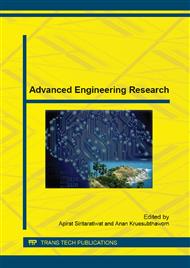p.462
p.466
p.471
p.475
p.479
p.483
p.487
p.491
p.495
An Artificial Neural Network Model for Chilling Environment Control in Meat Production
Abstract:
In this study, artificial neural network with a supervised learning algorithm called vector-quantized temporal associative memory (VQTAM) is proposed to estimate chilled weight loss during chilling process of pig slaughtering plant. Four models based on carcass weights are developed. The results show that the proposed algorithms can accurately predict chilled weight loss with an error rate of less than 5% on average. The models are also employed to determine the suitable chilling times for each weight class.
Info:
Periodical:
Pages:
479-482
Citation:
Online since:
August 2015
Keywords:
Price:
Сopyright:
© 2015 Trans Tech Publications Ltd. All Rights Reserved
Share:
Citation:


